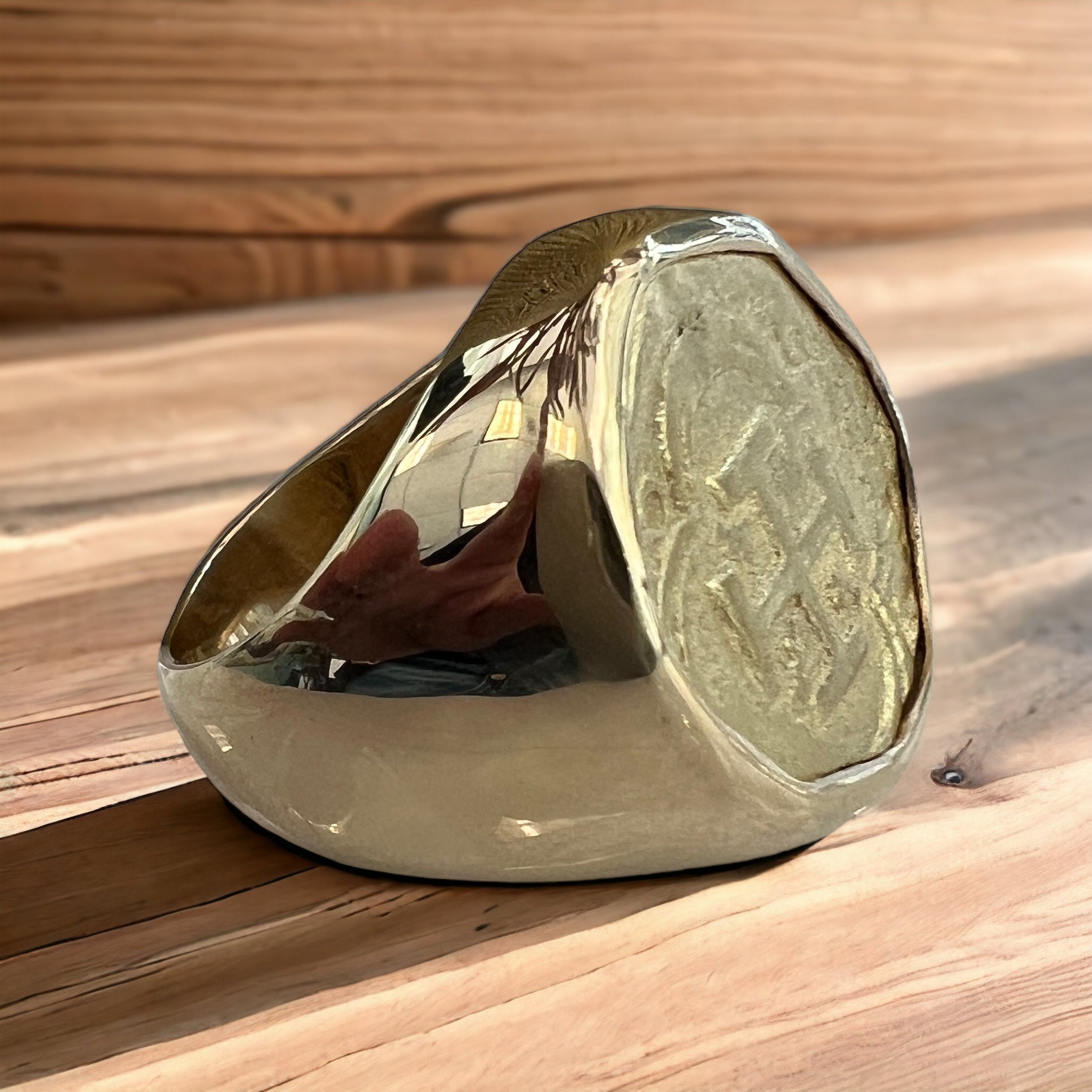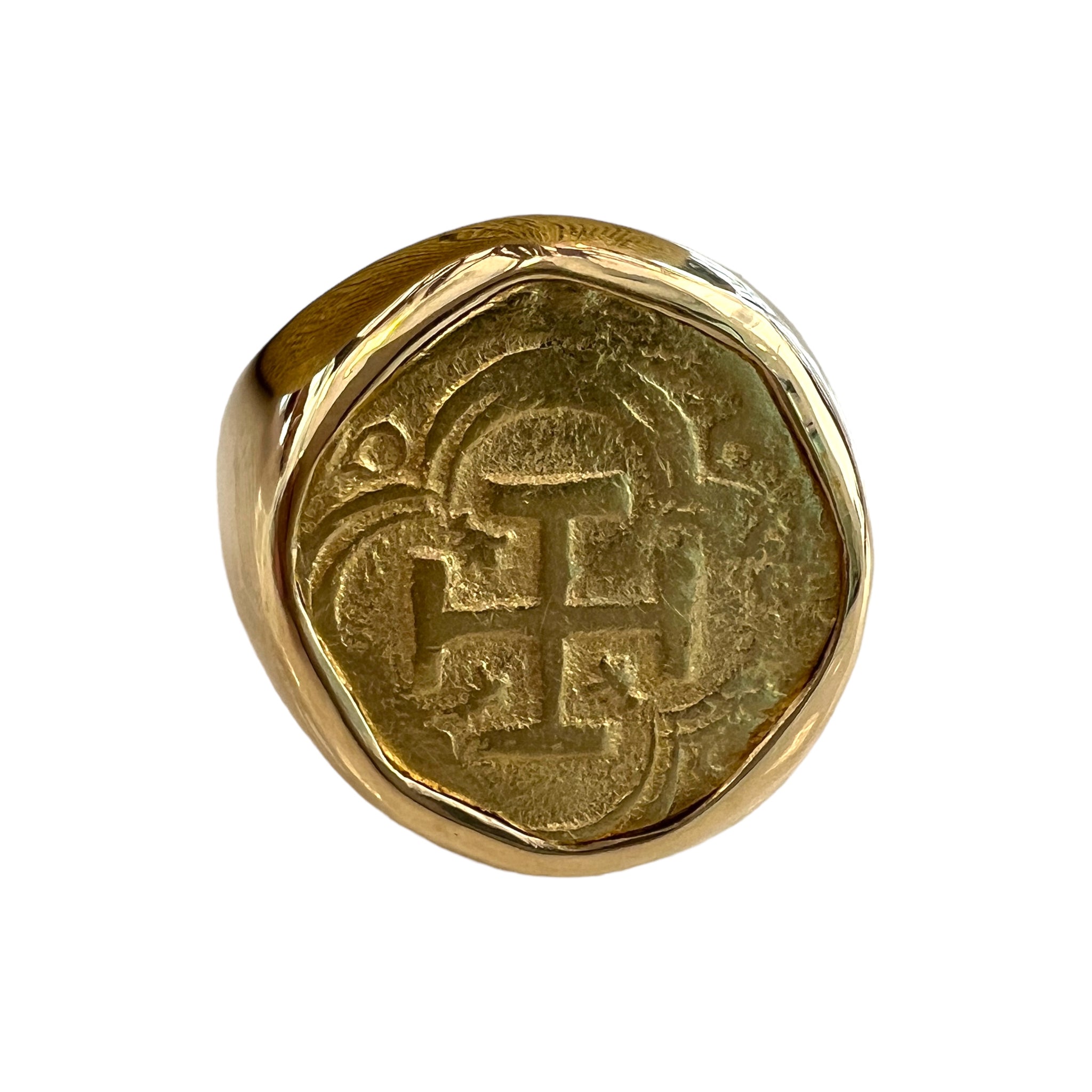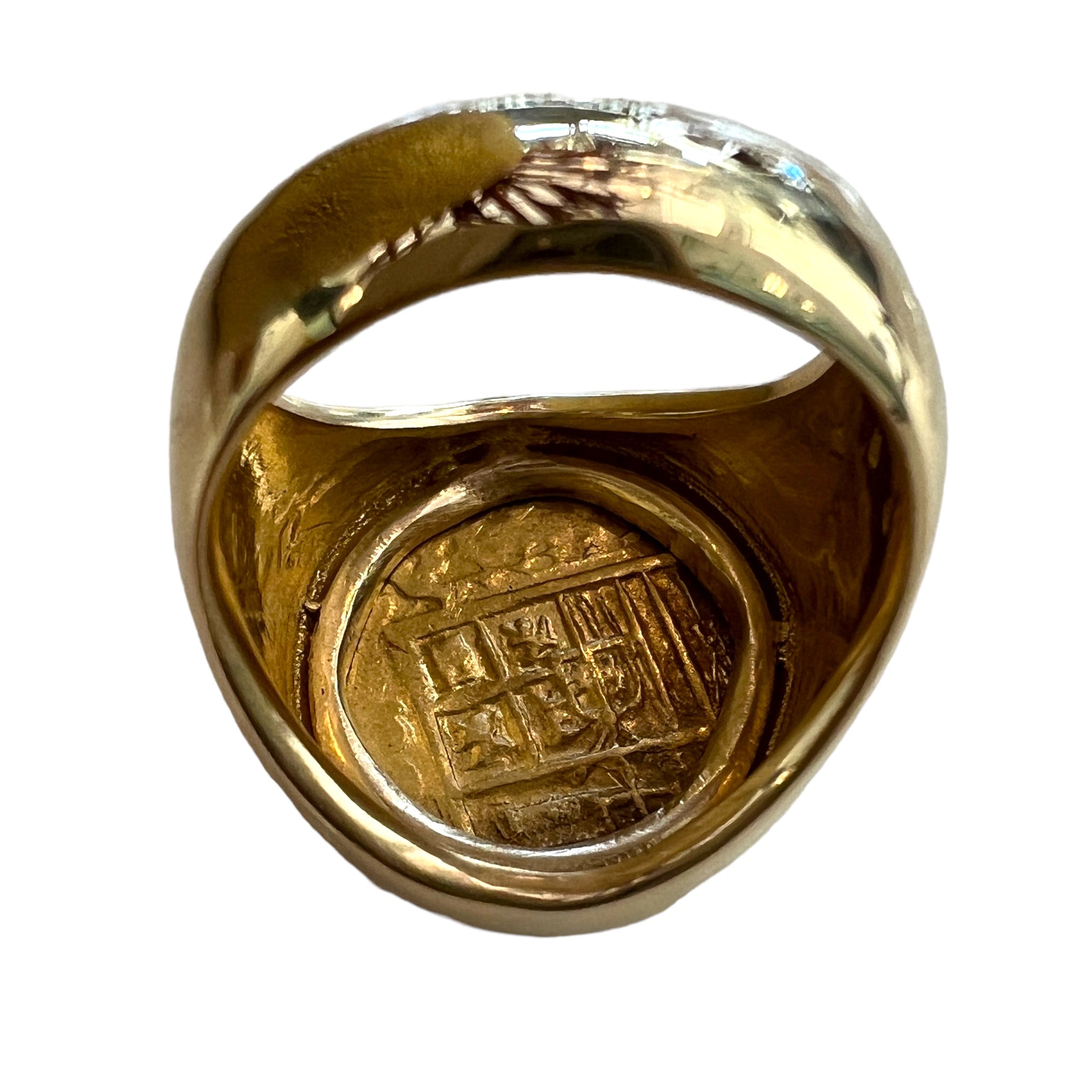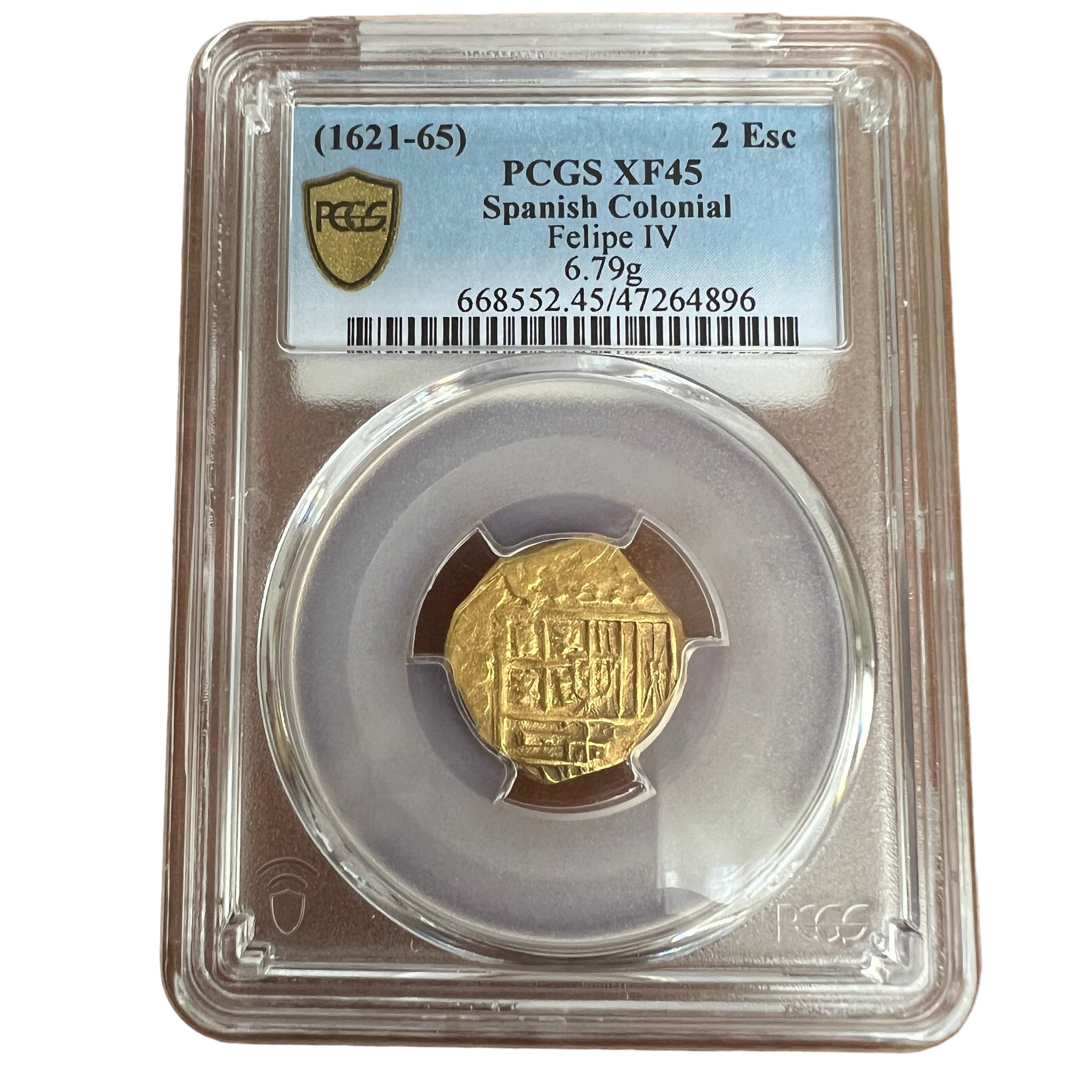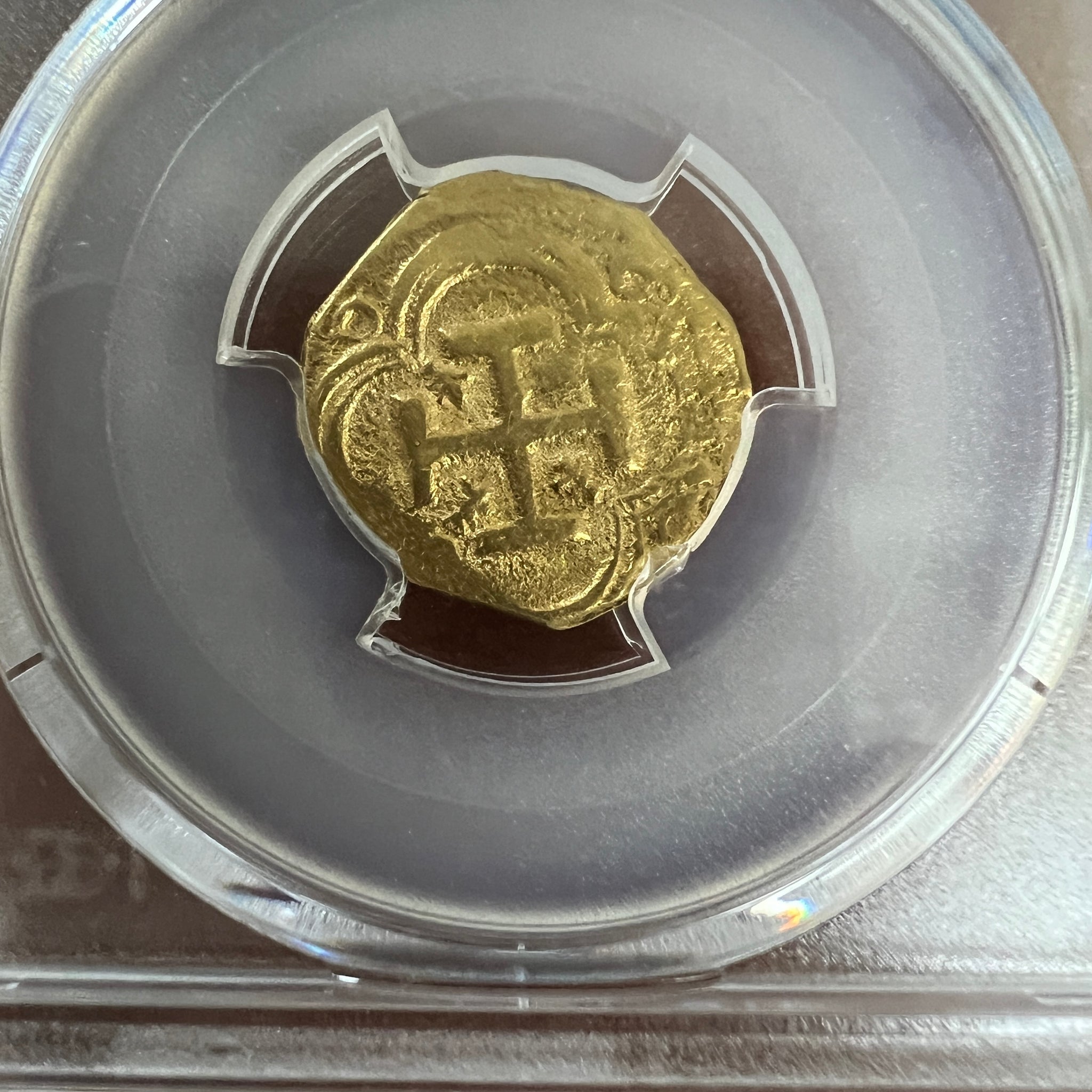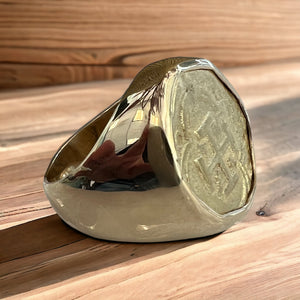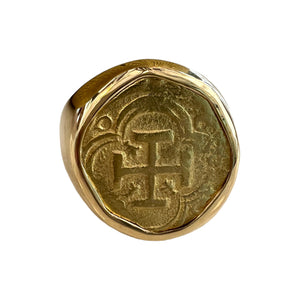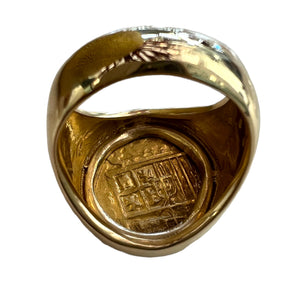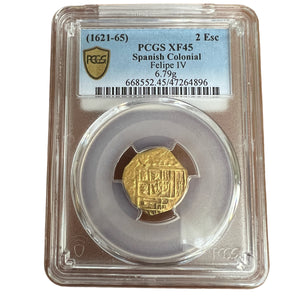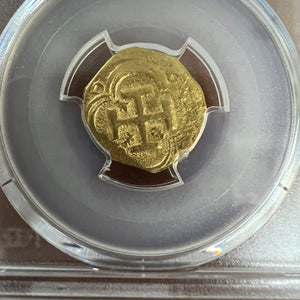Spainish gold coin - 2 Escudos - Presented in a 18K gold ring
$9,500
Denomination: 2 Escudos
Reign: Philip IV
Date: Not Visible (Circa 1592-1612)
Mint: Seville, Spain
Assayer: Not Visible
Weight: 6.79 grams
Grade: PCSG 47664896 - S extra fine 45
Mount: 18K gold ring
Description: A small-flan issue with a full cross and detailed shield. Obverse: Jerusalem Cross with lions and castles visible. Reverse: Hapsburg Shield.
History: The Seville Mint (Spanish: Casa de la Moneda de Sevilla) was one of the seven main mints of Castile authorized to continue after 1497 by the Catholic monarchs, the rest being closed. The earliest coins minted in Seville date back to Roman times, around 15 B.C. Later, the Visigoths minted from the year 621, the Arabs after 1060, and the Christian kings from 1252.
The New Mint was built in the Atarazanas orchards, next to the river and a few steps from where the colonial fleets arrived with the metals. During the reign of Felipe II, the House of Seville processed 72% of all the silver, and 87% of all the gold minted in the Iberian Peninsula, leaving the other mints almost without work. The Ordinance of 1730 for the centralization of mints eliminated all except those of Madrid and Seville, which would mint only silver and gold, and Segovia, which would be dedicated to striking copper coins. In 1861 the new Madrid factory was inaugurated and in 1869 the houses of Seville, Segovia and Jubia were closed, their equipment being sold at public auction. The House of Seville was divided into three parts and sold in 1870; a total of more than ten thousand square meters sold for about 244 thousand escudos.
21260

